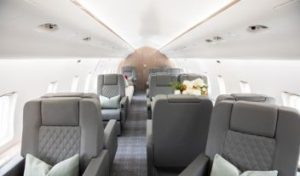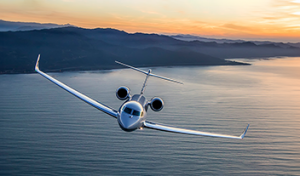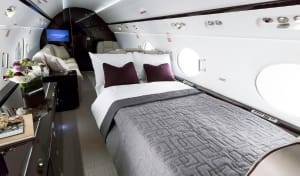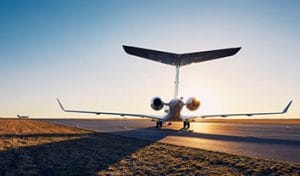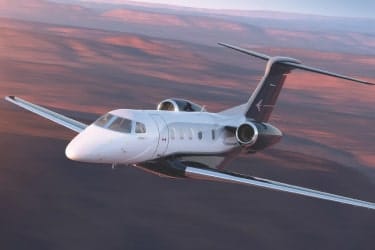Take privacy into your hands and get a quote from Magellan Jets, or call 877-550-5387 to inquire today.
2020 is officially in full swing, the year that private aircraft owners and operators have been anxiously awaiting. On Jan. 1, the FAA’s long-anticipated ADS-B mandate went into effect, requiring all aircraft to be specially equipped with new technology in order to fly in controlled airspace. So, what is ADS-B and how does it affect business aircraft owners and private jet travelers? Let’s break it down.
What is ADS-B?
For the past two decades, the FAA has worked diligently on NextGen. The project is a series of programs intended to modernize the nation’s air traffic system. A backbone of NextGen is a new aircraft tracking and information system called Automated Dependent Surveillance-Broadcast (ADS-B). This system replaces ground-based radar with satellite-based information. In addition, it provides more accurate aircraft data to other pilots in the area and air traffic controllers.
Traditional ground–based airport surveillance radar (ASR) systems have been used for more than 60 years, which are reliable, but offer limited information. ADS-B utilize quicker and more precise data that come from satellites. Aircraft equipped with ADS-B Out can now transmit much more information to air traffic controllers, including location, altitude, heading, forward speed, vertical speed, as well as trend information and aircraft registration number. Aircraft also equipped with ADS-B In (not yet a requirement) can also view information broadcasted by other ADS-B Out equipped aircraft in the same airspace. All of this is advantageous to pilots, operators, and ATC… or is it?
ADS-B Privacy Concerns
Nobody disputes the advantages of ADS-B. It definitely makes the airspace safer and more efficient for both commercial and private jet travelers. More precise aircraft monitoring means lower separation minima for aircraft, which translates to getting more aircraft in and out of airports at a time. It also simplifies the job of ATC, which will no longer have to tie up radios asking aircraft to report airspeeds or headings.
ADS-B allows other aircraft to see aircraft registration numbers and owners, which was previously information only visible to ATC. In fact, plane spotters and other curious minds on the ground can set up ADS-B receivers for a relatively negligible cost to receive the same information visible to ATC. On top of that, popular aircraft tracking websites like FlightAware broadcast the same data online.
Aircraft owners could previously opt out of tracking systems through BARR (Block Aircraft Registry Request), now called LADD (Limiting Aircraft Data Displayed). Both programs allowed aircraft owners to request that the registration information be blocked from public FAA data, which is where public tracking websites typically gathered data. Regardless of the name, neither program is technologically able to block the data from transmitting via ADS-B Out receivers, leaving private aircraft owners in a bind since ADS-B is mandatory.
So, What now?
The FAA created the Privacy ICAO Address (PIA) program because of pressure over privacy issues from business aviation groups. PIA improves privacy for U.S.-registered aircraft equipped with 1090 MHz ADS-B Out receivers that are authorized to use a third-party callsign.
In other words, the old BARR program has rolled over to the new LADD program. This, coupled with PIA, offers protections from ADS-B information being transmitted to public users.
What’s the catch?
There’s always a catch, right? Today, the technology for PIA only exists for 1090 MHz users. That’s just one type of ADS-B Out. Luckily, aircraft intending to fly above 18,000 feet must use 1090 MHz transmitters. Therefore, it isn’t a problem for most large jets. The other commonly used ADS-B type, a 978 Universal Access Transceiver (UAT). This is only available for use on flights below 18,000 feet. It also has its own privacy function – an “anonymous mode.” However, this mode would rarely be allowed for jets operating in the air traffic system across large areas. It’s really only meant for VFR flights not on a flight plan and not using ATC services.
What can aircraft owners and business travelers do to ensure privacy?
There are a few things you can do to ensure privacy, if it’s important to you. Above all, protect your personal or business name by choosing the appropriate ownership structure for your aircraft. Most owners interested in maintaining privacy register their aircraft under a trust or even a third-party trust. However, you should seek advice from a lawyer regarding business and aircraft ownership decisions like this.
Apply for the FAA LADD program, or if you work with an aircraft operator, inquire about their involvement with the program. Private aircraft owners or operators of aircraft equipped with 1090 ADS-B Out can apply for the PIA program via the FAA website to ensure ADS-B information transmitted in-flight remains private.
For extreme privacy, consider shared ownership, aircraft charter, or private jet card memberships, which can offer personal anonymity for business or personal travel.

